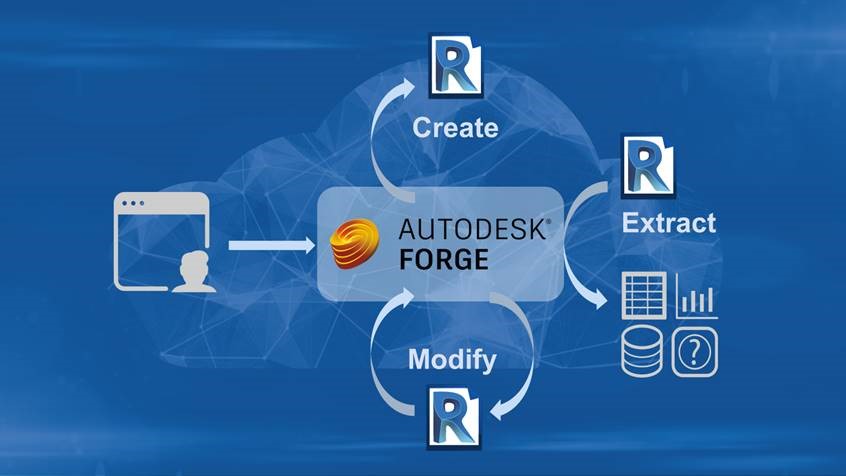& Construction

Integrated BIM tools, including Revit, AutoCAD, and Civil 3D
& Manufacturing

Professional CAD/CAM tools built on Inventor and AutoCAD
3 min read

Design Automation for Revit makes the Revit API you know and love available as a cloud service. It officially releases to the public today.
You asked us to make your lives easier by automating repetitive tasks. You also asked us to make Revit data more openly accessible. We listened. Design Automation is a Forge API that will not only increase your productivity and save you money, but it makes Revit more open and customizable, too.
This API will help developers customize Revit for third-party apps, but it will also benefit in-house developers at firms of all sizes who need to customize Revit for their specific needs. All Architecture, Engineering and Construction (AEC) companies can now benefit from automating tasks in the cloud.
Companies and application developers can use Design Automation to make Revit better for all of us. This new API is truly unique because it gives you unparalleled access to your BIM data, transforming your AEC workflows.
Design Automation allows previously time-consuming processes to run in the background, freeing up employees to focus on higher value design work.
You’ll be able to build and use cloud-native applications that generate, read, and modify Revit data. This makes Revit’s rich BIM data accessible to any cloud application. Tasks that needed human input or internal server farm capacity can now be completed with the touch of a button.
Kyle Bernhardt, Director of Strategy at Autodesk, says, “With the cloud, there is significantly less infrastructure required within a company to carry out their automation workflows with Revit. A business is trading the capital expenditure of buying a bunch of servers — that you have to then pay people to maintain — to a SaaS model with a subscription.”
Plus, Bernhardt adds, it’s exciting for firms to access the benefits of the cloud’s scale, so they don’t have to face the limitations of smaller, local servers.
We prioritize listening to our users’ challenges, and Design Automation was built from that feedback. We know output production is important but can be quite time-consuming for individuals to do manually. Design Automation shifts the work, and therefore the cost, from a human-driven task to a technology execution.
The second challenge users often face is the ease of building quality control into their processes. “We’re seeing a lot of developers focus on quality metrics across the scale of a business,” Bernhardt says. “By being able to automate these quality checks across all models, it shows where technology and staff should be focused to make sure the models are behaving as effectively as possible.”
The ability to automate repetitive tasks on a large scale frees up time elsewhere for staff to do other work. Allowing Design Automation to run on the cloud in the background, means other tasks can be completed on local machines.
“Think of what a company could do if it has individuals who are very capable and competent in the craft of design freed from those repetitive, time-consuming tasks,” Bernhardt says. “Think of what that company could provide to its clients if those individuals spent a lot less time staring at Revit while it’s producing these outputs. There’s so much value they could deliver to their clients with that free time.”
These repetitive tasks can be set to run at any time, meaning there’s no reliance on an employee to trigger the job. This means some of the more time-consuming processes could run overnight, with the outputs ready and waiting for the following morning’s tasks.
We are just getting started unleashing the power of Design Automation on the Revit ecosystem. Follow the Revit roadmap for more details as they become available. Learn more and check out Design Automation for Revit tutorials .
If you’ll be joining us at Autodesk University in Las Vegas in November, you can learn more at the following classes:
By clicking subscribe, I agree to receive the AEC newsletter and acknowledge the Autodesk Privacy Statement.
Success!
May we collect and use your data?
Learn more about the Third Party Services we use and our Privacy Statement.May we collect and use your data to tailor your experience?
Explore the benefits of a customized experience by managing your privacy settings for this site or visit our Privacy Statement to learn more about your options.